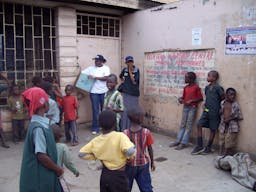More to HIV than partial prevention
Jan 21, 2015
Story
There is a saying among Zambian women that AIDS can kill me in months or years but hunger can kill me tomorrow. Despite the uncertainty of male circumcision as a prevention method our leaders through ministry of health launched the male circumcision policy last month. This is with a view to reduce the HIV infection especially among men.
As a concerned woman and person working in an HIV environment I feel the war against HIV and Aids can not be effective without addressing the core drivers. Poverty, multiple concurrent partners and alcohol abuse remain core drivers of HIV and AIDS. In as much as the leaders continue to embrace and donate millions of kwacha to new partial prevention measures male circumcision, and avoid the core drivers of the pandemic, HIV will continue to spread.
However since the invasion of HIV and AIDS 25 years ago in Zambia, prevention methods such as condom use abstinence and be faithful has been widely preached but no greater impact has been seen. There is more to HIV then prevention. Male circumcision will only increase the spread of HIV than actually reducing the spread of the virus. So far reports in communities are that male circumcision prevents a man from passing on or contracting the HIV infection. International community magazine for women confirm that newly circumcised men happily shared information that they can now have sex without using a condom.
As I discovered in a recent journal new reports suggest that circumcising HIV-positive men does not reduce the risk of their female partners becoming HIV-infected. This implies that male circumcision protects a man more than a woman. Women are at high risk to the male circumcision practice because the practice is uncertain. Culture has it that a man makes final decision even when it comes to sexual reproductive activities. Hence decides whether or not to use a condom. But will male circumcision reduce the spread of HIV?
I agree with Professor Lou who allured to the fact that HIV and AIDS is a complex issue. The fight against HIV and AIDS has to be thought through, male circumcision alone as a strategy can not be used as an intervention to fight HIV.
Living in a developing nation has also enabled me to realize that unless we kick out poverty, Levels of HIV and AIDS cannot be reduced. Two thirds of Zambian populations of approximately 12 million people live in abject poverty. The poverty level has not only slowed the development process but has enabled many youths and women to be involved in dubious means. Although our government has put in place some measures to alleviate poverty, it is not enough as hundreds of people keep losing their Jobs. Hence the poverty levels continue to accumulate. The networks for strategic planning reports confirm that, in Zambia the spread of HIV/AIDS and poverty are strongly linked. Therefore addressing HIV/AIDS issues that matter to the poor is critical to reducing the infection among the poor. .
Like the saying goes, HIV and AIDS can kill me in months but hunger can kill me tomorrow .Hundreds of young girls, and women have resorted to prostitution in the plight to make ends meet. I know of girls, some friends others relatives who have lost their lives in search of money. Most of these girls and young women give out their bodies in exchange for money so that they feed themselves and their families.
Excessive alcohol abuse among youths remains a challenge. Due to high unemployment and inadequate empowerment programs many youths resort to alcohol. Most youths spent their morning, afternoon and evening in drinking places and as a result end up indulging in sexual activities. Hence the high levels of HIV and AIDS among the 15-35 age groups. Multiple concurrent partners also remain a challenge as there are few programs in place to look at behavior change.
I urge our leaders both local and international to focus on eradicating the drivers of HIV. They should focus on poverty alleviation, create employment, introduce more empowerment programs, and promote positive behavior change. Increase awareness of condom use, abstinence and be faithful programs.
This article is part of a writing assignment for Voices of Our Future, which is providing rigorous web 2.0 and new media training for 31 emerging women leaders. We are speaking out for social change from some of the most forgotten corners of the world. Meet Us.




